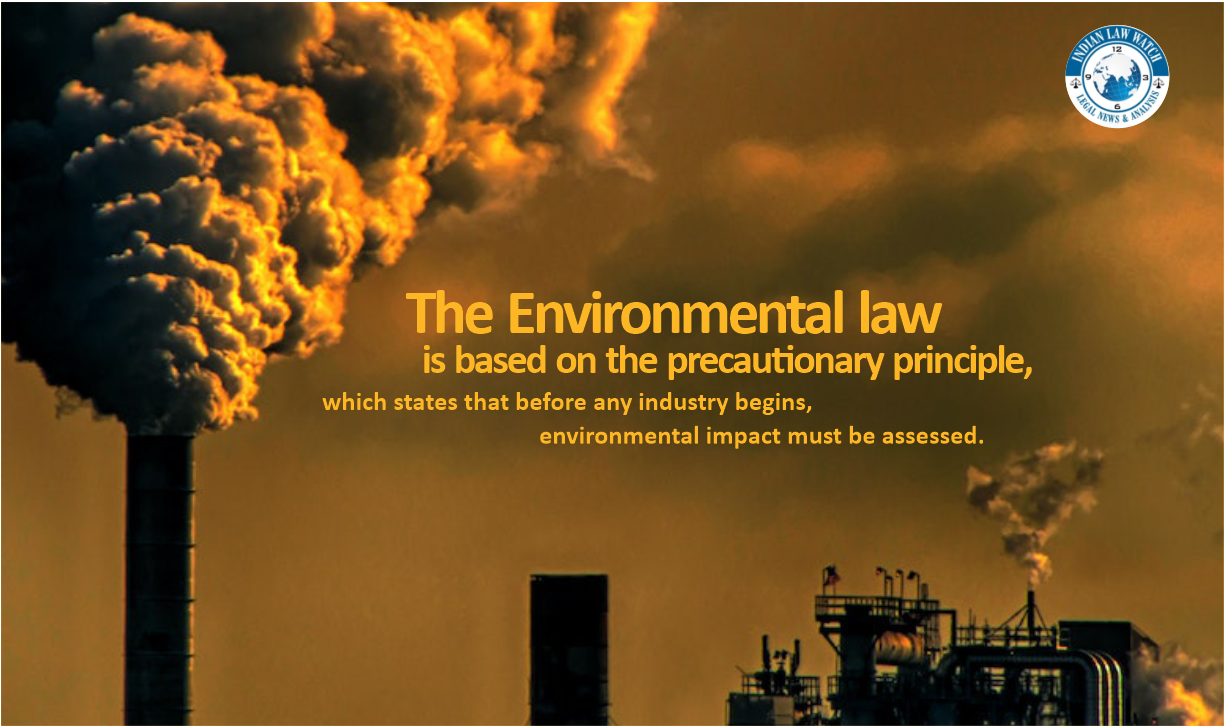
Pahwa Plastics- A Threatening Precedent for Environmental Protection
“There is simply no issue more important. Conservation is the preservation of human life on earth, and that, above all else, is worth fighting for.”
-Rob Stewart
The Environmental law is based on the precautionary principle, which states that before any industry begins, one must assess what the environmental impact is going to be, account for it and navigate it. Therefore, an industry has to file for environmental clearance prior to the commencement of a project, according to the Environment Impact Assessment (“EIA”) notification of 2006 which includes a systematic process, such as screening of the project, ‘scoping’, where the experts committee asks the project proponents to address concerns, public consultation for certain projects, and appraisal of the project.
The Supreme Court in the recent judgment of M/s Pahwa Plastics Pvt. Ltd. and anr. vs. Dastak NGO and ors. [1] Civil Appeal No. 4795 of 2021 stated that an environmental clearance could be granted after the industry is operational in exceptional circumstances. It started in June 2021, wherein the National Green Tribunal (“NGT”) held that industrial units which manufacture synthetic organic chemicals specifically, formaldehyde in Haryana were mandated by law to obtain environmental clearance from the Union ministry before commencing the operations. The industries were also required to prepare an EIA report and conduct a public hearing before the approval is granted. The NGT in its order stated that establishments such as the manufacturing units of Pahwa Plastics, which did not have prior Environmental Clearance, could not be allowed to operate. In the appeal filed before the Supreme Court the question was whether an establishment employing about 8,000 employees, which was placed after getting the ‘consent to establish’ and ‘consent to operate’, from the concerned statutory authority, and has applied for ex-post-facto clearance, should be shut down even though it may not be causing pollution. The court firmly held that ex-post-facto clearance is permissible under the law. On reading the court’s conclusion it is interpreted that the key concern was on the livelihood of hundreds of employees of the industry, annual turnover and contribution to the economy of the country.
This concept of ex post facto clearance provides a means for the promoters of the project to implement projects without obtaining prior clearance, and then apply for retrospective clearance; it negates the due diligence that is required for prior clearance. Ex post facto clearance is also weakens the public consultation process, which is mandatory for an environment clearance. Contrary to the precautionary principle the ex post facto clearance gives an industry a direct way to start working and then applying for clearance as it will be granted at later stage. Permitting for an ex post facto clearance there would be no conditions that would safeguard the environment and if the Environment Clearance has to be later on refused, there would be irreparable harm caused to the environment. Furthermore, it will amount to ‘technical irregularity’ if any industry does not obtain a prior approval as required under the law and the court shall consider violations of environmental laws as more than just a “technical irregularities,” also this amounts to the crimes against humanity and nature, which is also a violation of constitutionally guaranteed rights under the Article 21 of the Constitution.
EIA practice in different countries:
EIA system was introduced with the enforcement of the National Environmental Protection Act (“NEPA”) of 1969 in the United States and it became the first country to give importance to EIA. Various countries adopted it such as Canada, Australia, the Netherlands and Japan accepted EIA legislation in 1973, 1974, 1981 and 1984, respectively. Only fundamental items were stipulated in NEPA, and supplemented some specific system in Regulations of National Environmental Policy Act, 1978. The NEPA procedures contain unique specifications not found in the EIA systems of other countries, such as EIA should be applied not only to project approval action but action on legislative and other such proposals (SEA), and EIA statements should be prepared by federal agencies.
EIA systems were introduced into French legislation with the passing of Law on Nature Protection in 1976 and its government ordinance the following year. The EIA system in France is classified into three types: projects exempted from EIA procedures including public projects, private projects requiring public agency approved, and Town planning, projects requiring a simple EIA, and projects requiring the implementation of a detailed EIA.
In the assessment of the effects of certain public and private projects on the environment, the projects that require EIA (évaluation environnementale), on a threshold or a case by case basis, aas listed in the Annexure to the Environment Code. The authority “in charge of the case-by-case examination” (autorité en charge de l’examen au cas par cas) conducts a case-by-case study and the Environmental Authority then issues an advisory opinion on the EIA to the administrative authority entitled to grant the authorisation.
AUSTRALIA
In Western Australia, major projects are assessed by the Western Australia Environmental Protection Authority under the Environmental Protection Act 1986. Through the formal impact assessment process, the EPA will assess projects and make a recommendation to the Minister. As part of this process the proponent is required to prepare or assist in the preparation of a number of documents. In the Northern Territory proposed actions which have the potential to have a significant impact on the environment require an EIA under the Northern Territory Environmental Assessment Act 1982 which is assessed by the Northern Territory Environmental Protection Authority, an independent authority. Proponents are required to prepare several documents which outline the proposed development and the potential environmental impacts.
SINGAPORE
The use of EIA procedures in Singapore has till date been minimal. In Singapore, the emphasis is on dealing with the end-of pipe problems of pollution control; the recent Environmental Pollution Control Act 1999 once again reinforces this orientation with requirements to conduct impact analysis studies for hazardous installations. Environmental Assessment (“EA”) has generally been conducted under an ad hoc system with only a few studies. The Nature Society has completed some EAs on a voluntary basis whilst others were undertaken by multinational companies that wish to conform to their own environmental management systems. Thus, Singapore as yet, has not adopted mandatory legislation for EIA and that many of the developments, including large infrastructure projects, have taken place without the use of EA.





